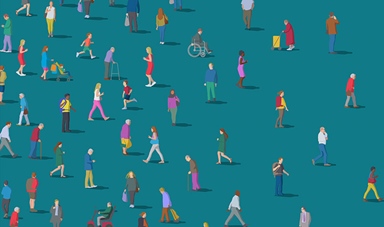Loading component...
At a glance
- According to research from the Diversity Council of Australia, 48 per cent of workers with a disability have experienced harassment or discrimination.
- Indirect discrimination is also found to be common, and a challenging employment environment has driven many people with disabilities to opt for self-employment.
- When it comes to inclusion in the workplace, disability is often perceived as too challenging.
- Businesses that are supportive and inclusive of people with disabilities have reported greater employee satisfaction, higher performance and a stronger culture of innovation.
Since he was 14, Natale Cutri ASA had his heart set on becoming an accountant. “I was very clear in my ambition,” he recalls.
Unfortunately, others were not always willing to support the vision-impaired teenager in achieving his dream.
A retired accountant engaged by the Royal Victorian Institute for the Blind (RVIB; now Vision Australia) to read print textbooks for audio conversion withdrew his services when he learned that Cutri planned to study accounting at university, arguing that a person who is blind or vision-impaired could not be an accountant.
“This is life for people with a disability,” Cutri says. “Able-bodied people assume what we can and can’t do, and what we can and can’t see.”
Undeterred, Cutri completed his university studies and secured a position at Victoria Police through WISE Employment, a disability employment organisation.
Twenty-five years later, Cutri is a financial analyst in Victoria Police’s financial services department. It is a role he finds rewarding in an organisation he respects.
“I like what the Victoria Police stands for,” he says. “It’s an organisation that supports the community.”
Still, digital exclusion remains an almost daily battle for Cutri, who uses assistive technology that is not compatible with the standard operating systems used in most workplaces. He says up to 90 per cent of the content on the internet is in a format he can’t read.
This lack of accessibility has implications for Cutri’s professional development, including his ongoing efforts to gain a CPA qualification.
Too often, Cutri says, it is left to the person who needs the reasonable adjustment to find a solution to a systemic problem, such as poor accessibility.
“Over the years, I’ve managed to develop the relationships within the organisation to be able to negotiate the reasonable adjustments I need,” he says.
“To the credit of Victoria Police, there’s never been a reluctance to support people with disability – it’s a matter of working out how. It’s more a bureaucratic process in getting things done that creates the barriers.”
Disability in Australia
Cutri is one of more than 4.4 million people in Australia who have a disability, representing about one in five of the population.
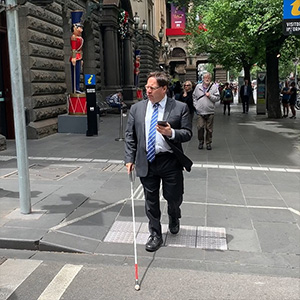
Many people with disabilities struggle to find employment. Of the 2.1 million Australians of working age (15-64 years) who have a disability, only 47.8 per cent are employed, compared to 80 per cent of nondisabled people in the same age bracket.
Suzanne Colbert AM is the founding chief executive of the Australian Network on Disability (AND), a national organisation that aims to improve the accessibility and inclusion of people with a disability in Australian workplaces.
She says the many barriers to employment that people with a disability face can be broadly categorised as hard and soft. “An organisation might choose software that excludes a person with vision impairment – that’s an example of a hard barrier,” she says.
Soft barriers refer to people’s mindsets and the assumptions made about people with a disability that can unfairly hinder their career development. “Without asking, a supervisor or manager might assume that a person who has mobility impairment doesn’t want to take on a stretch assignment that involves some travel,” she says.
"When you become skilled at accommodating individual differences associated with disability, you've actually become skilled at accommodating all kinds of other individual differences. You have a workplace where people see each other as fellow humans in their entirety."
The Diversity Council Australia-Suncorp Inclusion@Work Index found that, in 2019, 48 per cent of workers with a disability experienced at least one incident of harassment and/or discrimination in the previous 12 months.
“Indirect discrimination happens all the time,” Cutri says.
“I’ve applied for positions at my level for a secondment and not even got an interview. I don’t believe that just because you’ve got a disability, you should get a job. It’s about making it a level playing field and recognising that a person with a disability has to conquer other challenges to get to that point that non-disabled people don’t.”
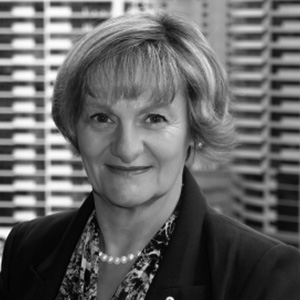
A traditionally hostile employment landscape has driven many people with disabilities to choose entrepreneurship as an alternative.
Simon Darcy is a professor at the University of Technology Sydney who co-authored a study in 2020 that found that people with disabilities had a 43 per cent higher rate of self-employment or entrepreneurship than the general population.
Darcy, who has a spinal injury and uses a wheelchair, says he has heard many stories of candidates failing to progress through the recruitment process once they disclose their disability.
In one case, a woman was sitting in a waiting room before her interview when she overheard two panel members discuss her application.
“Don’t worry too much about the next one, because we just got her in to make it look like we’re doing the right thing,” she heard one of the interviewers say. “Can you imagine how it felt when she heard that?” asks Darcy incredulously.
The cost of exclusion
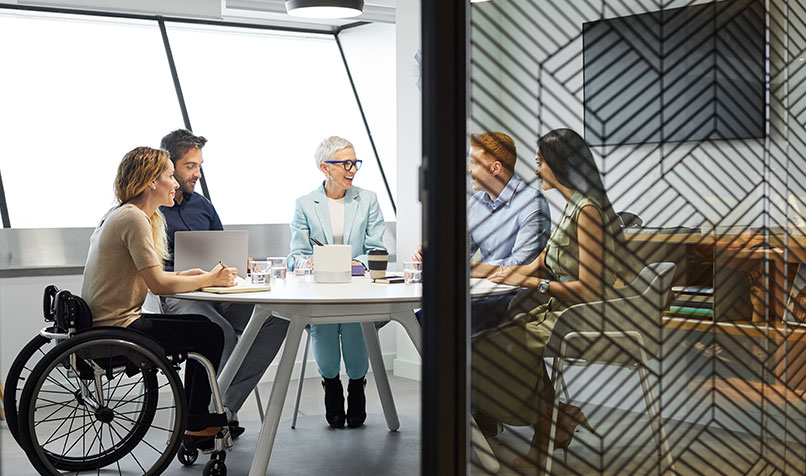
An inclusive workplace is one in which people are accepted for who they are, Colbert says.
“Inclusion of people with a disability means being skilled at accommodating individual differences. The good part about that is, when you become skilled at accommodating individual differences associated with disability, you’ve actually become skilled at accommodating all kinds of other individual differences. You have a workplace where people see each other as fellow humans in their entirety.”
An “individual difference” could be a hearing impairment, a learning disorder such as dyslexia or a mental illness, says Colbert. “None of these things excludes people from being high performers in their workplace, but it does mean that the organisation, its people and its systems need to have the capability to accommodate difference.”
The business case for inclusion is well established. Research from the Diversity Council of Australia shows that employees at inclusive organisations are more likely to innovate, work extra hard and provide excellent customer service. Inclusion has also been found to foster employee satisfaction, success and security.
In the diversity space, disability “is often the one group that’s seen as the hardest”, says diversity expert Fiona Krautil, which means it is often left out of diversity and inclusion strategies.
Yet, by overlooking people with disabilities, organisations “miss out on 20 per cent of the talent pool”, says Debbie Brooks, national diversity employer manager at atWork Australia, an employment services provider that works with people living with disability and disadvantage.
atWork Australia helps employers navigate the many different forms of support available to them, says Brooks.
One such resource is the Employment Assistance Fund (EAF), which is administered by government-run disability employment agency JobAccess. EAF provides funding to cover costs of physical workplace modifications, Auslan interpreters, disability awareness training and specialised support and training packages for people with mental health conditions or specific learning disorders.
Brooks believes there is a lack of awareness among employers about how simple and inexpensive it is to accommodate an employee with a disability.
“An adjustment doesn’t necessarily mean putting in a ramp or widening a doorframe,” she says. Very often it is small changes – a font – that allow a person with a disability to do their job better.
These changes have “a flow-on effect to the rest of the workforce”, says Brooks. A policy or process such as flexible work arrangements or core hours that support an employee with a disability also benefits other groups, such as working parents. A well-run inclusion program, she says, has “a win-win effect throughout the organisation”.
Measuring progress
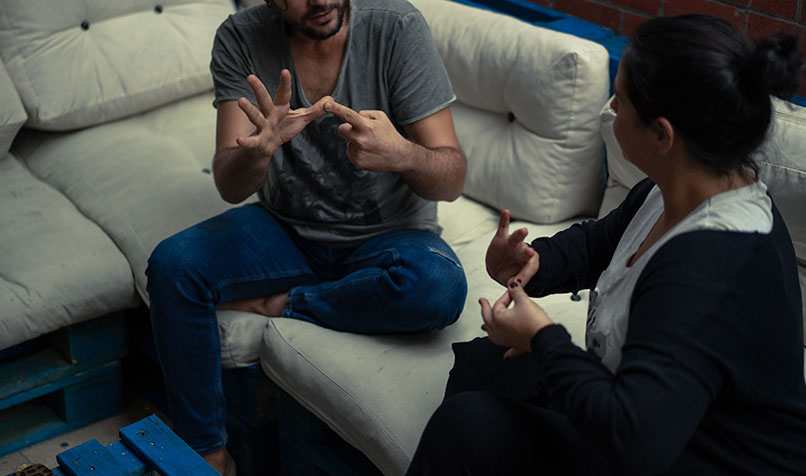
Every year, AND evaluates and benchmarks the disability confidence of its member organisations in its Access and Inclusion Index. “The organisations who measure their progress…don’t invest time and effort in things that don’t work,” Colbert says.
At the Australian Taxation Office (ATO), one of the top three performers in AND’s Access and Inclusion Benchmark Report 2019-20, an employee-led National Disability and Ally Network has helped identify and overcome barriers to disability inclusion.
Employees can now use a new tool known as the My WorkAbility Passport to disclose their disability or illness and manage any workplace adjustments, such as screen reading software, flexible working hours, adapted office equipment or hearing loops.
"At the end of the day, we all want the same opportunities as everybody else. I'm not asking for special treatment. I want to excel in my field of accounting."
At present, the ATO is determining its revised disability employment target. With about 8 per cent of its workforce identifying as having a disability in the Australian Public Service Commission’s anonymous employee census in 2019, the challenge lies in creating a safe environment for people to officially disclose their disability.
“Our workplace culture will continue to be a critical factor in our future success,” says Belinda Casson, assistant commissioner at the ATO.
“We are committed to building a disability-confident culture through developing the right attitudes, behaviours, systems and knowledge to support the inclusion of all current and prospective employees with disability.”
Victoria Police, an AND gold member, has implemented similar strategies in its efforts to achieve a target of 6 per cent disability employment by 2020.
Cutri is a founding member and chair of Victoria Police’s VP Enablers Network, a group of employees with lived experience of disability and their allies, that was formed four years ago. “We’re there to highlight to the organisation where the barriers are and to assist the organisation in making information accessible.”
The goal is to create a proactive culture where disability accessibility and inclusion are automatic – not an afterthought. Victoria Police consulted with the VP Enablers Network in the planning of the organisation’s new premises at 311 Spencer Street and an upgrade of the intranet, which was previously inaccessible to vision-impaired employees.
“At the end of the day, we all want the same opportunities as everybody else. I’m not asking for special treatment,” Cutri says. “I want to excel in my field of accounting.”
How to create an inclusive workplace
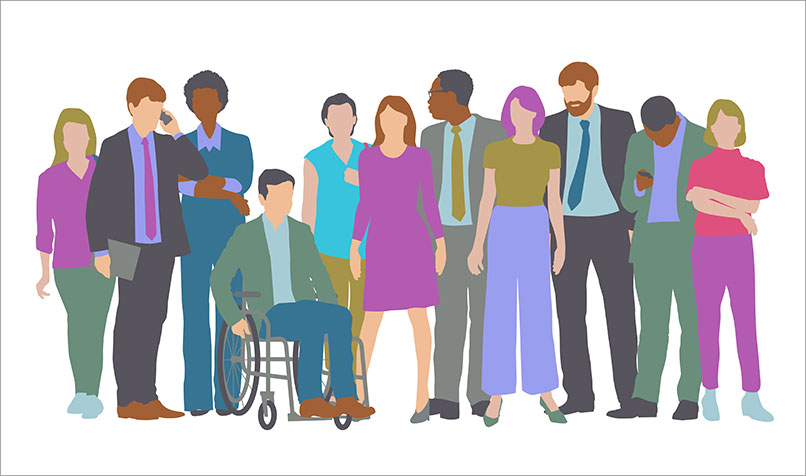
- Conduct an evaluation: to determine how many employees have shared that they have a disability. This, according to diversity and inclusion expert Fiona Krautil, is the first step. Next, do a desktop review of policy. “How inclusive of disability are your policies?”, she asks. “Do you have a reasonable adjustment policy?”
- Run focus groups: that include people with disabilities to discover what is happening on the ground and identify priorities to address in a strategy document. Krautil says, “You often find a lot of people who are carers of people with disabilities put up their hand to get involved when organisations publicise that they’re creating an Accessibility Action Plan.”
- Implement recruitment practices that use inclusive language: and include a statement about the organisation’s commitment to equal employment opportunity in job advertisements. Check if shortlisted applicants have any specific requirements to enable them to participate in an interview.
- Create a safe space: for people to speak about their disability. Inclusion is impossible “unless everybody feels safe to bring their whole self to work”, says Krautil.
- Build awareness: by putting disability on the agenda, says Krautil. Celebrate International Day of People with Disability on 3 December, invite guest speakers and share positive stories in newsletters.
- Run disability confidence training: to provide your workforce with the knowledge and skills to welcome people with a disability into your organisation and put inclusive behaviours into practice.
- Test your biases: to check if you hold any subconscious biases towards people with disabilities. The Harvard Implicit Association Test is an example of a tool that can be used.
